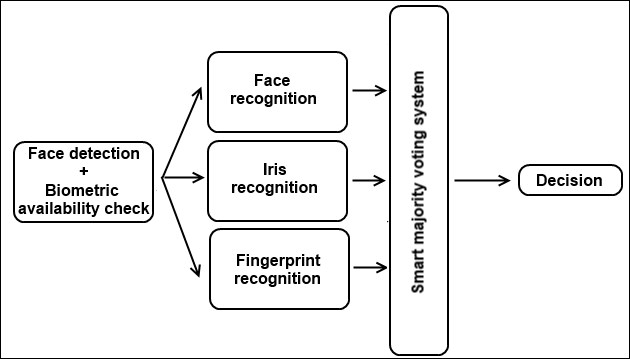Combining the techniques to create an efficient people-registration system
The previous sections each discussed a specific biometric property. Now, let's combine all this information to create an efficient identification system. The approach that we will implement follows the structure described in the figure below:

People authentication pipeline
As shown above, the first step is to use a camera interface to check if there actually is a person in front of the camera. This is done by performing face detection on the input image. We also test to see if the other biometric systems are active. This leaves us two checks that need to be performed:
Check if the iris scanner is in use. This, of course, depends on the system used. If it depends on the eye retrieved from the face detection, this check should be ignored. If the eye is retrieved using an actual eye scanner, then there should at least be an eye detected to give a positive signal.
Check if the fingerprint scanner is active. Do we actually...



























































